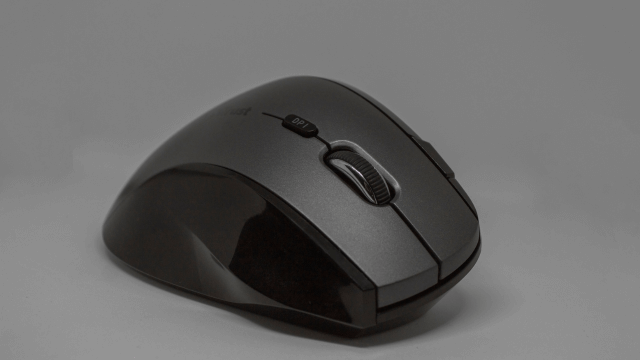PoE Digital Workplace

Physical Meets Digital for a Better Customer Experience
Chris Wells of the Australian marketing firm Momentum Worldwide is credited with coining the term ‘phygital’ to describe customer experiences online and in a store. A phygital strategy is a vision that enables customers to move seamlessly from a physical to a digital shopping experience.
If you’ve ordered an item online but picked it up at the store, you’ve moved from a digital to a physical shopping experience. The best experiences happen so seamlessly that the consumer views the process as a single transaction.
A similar strategy is needed in the workplace as employers continue to offer hybrid environments. Employers need solutions such as a PoE digital workplace to allow their staff to maintain productivity as they move from one environment to another.
Companies with a good consumer shopping strategy retain customers and create a competitive edge that improves their bottom line. Employers need a similar strategy to attract, engage, and retain quality employees.
With improved experiences, employees become more productive. Yet, only some companies focus on developing a seamless work experience as a part of their digital transformation plans.
Why a PoE Digital Workplace Needs a Strategy
When the world moved to remote work, employers needed help providing digital connectivity between the in-office and remote employees. Individuals persevered through these struggles because they were learning how to work from the kitchen table. Employees have less patience for these barriers three years later, and customers even less so.
Hybrid Work Environments
Hybrid workplaces are full of phygital experiences, although few are seamless. For example, let’s imagine our employee, Sam, works in the office on Mondays, Wednesdays, and Fridays and remotely on Tuesdays and Thursdays. When Sam leaves on Monday, he downloads large files he may need the next day and copies any work-in-progress to a USB drive. He knows files can take forever to download, and he can get more done working offline.
Microsoft’s Work Trend Index Report found that 42% of employees lack the resources to work remotely. Although a lack of technology may not motivate every employee to look for a new job, 35% would find a new position if forced to return to the office full-time. However, 85% of employees would likely stay with a company if provided with effective supporting technology.
The hybrid work environment is not going away. Job applicants seek remote work opportunities and the tools to make it possible. Forrester predicts that up to 30% of businesses that mandate full-time in-office work will lose as much as 2.5% of their employees monthly.
Connectivity, Communication, and Collaboration
At the onset of the pandemic, most organizations lacked the necessary connectivity, communication, and collaborative tools to establish a seamless remote work experience. Audio and video conferencing had latency problems. Users lacked the skills needed to use the tools of remote work. Employees spent more time trying to get these tools to work than using them.
Today, 75% of the workforce believes these tools are essential for effective teamwork. Employees want the equivalent of an omnichannel experience. They want to connect to their team from any device instantly without a loss of content or context. Hybrid work environments may be essential for employee retention, but collaborative tools that build cohesive teams create the competitive edge organizations need to survive.
Organizations in all industries should invest in technologies that can bridge the gap between the digital and physical worlds, including Power over Ethernet (PoE). PoE can help facilitate a digital transformation by strategically placing PoE-enabled devices throughout office buildings.
What is PoE?
Power over Ethernet (PoE) technology allows an Ethernet cable to carry power and data over the same wire. Networked workstations require an Ethernet connection and a power source. Security cameras require a similar configuration—a way to transmit video and a connection to receive electricity. Only an Ethernet cable is needed to use PoE technology, making deploying devices across an enterprise faster and less expensive.
Today’s PoE devices can deliver up to 100W of power and transmit data at 2Gbps. They provide the flexibility hybrid work environments need without compromising data transmission speeds. These devices can also help companies reach sustainability goals by minimizing energy consumption. These emergent technologies can help build a PoE digital workplace and a frictionless employee experience.
Building a PoE Digital Workplace
Hybrid work environments must adapt to office fluctuations. Organizations may have half of their staff in the office on Mondays, half that on Tuesdays and an empty office on Thursdays. IT departments must create an infrastructure that can quickly adjust to external and internal resource demands. They need solutions that will minimize the cost of office operations.
Making the Physical Flexible
Office buildings should embrace flex spaces. IT departments will need more network access points on days when 50% of the employees are in the office. PoE switches and wireless access points let network administrators activate connections based on demand. Since power is not required, PoE-enabled switches and access points can be deployed where needed.
With an SD-WAN (software-defined wide area network) architecture, configuration changes can happen quickly without physically accessing a device. Employees can collaborate seamlessly using video-conferencing and document-sharing tools while network reconfiguration occurs in the background.
When fewer employees are physically present in the office, dividing large spaces into smaller ones becomes possible. Companies can install PoE-enabled sensors in strategic locations throughout the larger space that will report changes in temperature and lighting so office areas can be controlled automatically.
When employees reserve a space, environmental control systems can automatically adjust the temperature and humidity to a comfortable level. When the space is no longer in use, the system will automatically lower temperatures and turn off lights to save energy and money.
Delivering Consistent Digital Experiences
As new tools are added to the workplace, employees must gain the skills to use them effectively. Over 50% of employees say they need to upgrade their digital skills. For many, all the glitches experienced when switching to remote work have undermined their confidence and increased their resistance to change. Training should help these employees learn how to approach their new tools.
PoE-enabled media converters allow copper and fiber wires to co-exist, making it easier for network administrators to manage data quality and distribution. Conventional switches require both a network connection and a power source. Cost and downtime spent waiting for an electrician can limit IT’s ability to segment the network quickly. PoE technology minimizes these costs while enabling more granular network control.
Making a Seamless Work Experience
PoE technology can help IT departments create a flexible and resilient infrastructure. Media converters make integrating fiber and copper easier. Adding switches and access points can help segment a network and enable better bandwidth distribution. PoE-enabled IoT devices, such as sensors and cameras, can collect data to help improve the work environment without the added cost of running new power lines.
Remember Sam, our imaginary employee? In a PoE digital workplace, he can leave the office on Monday without worrying about downloading or copying files. He doesn’t need to check that he lowered the temperature and turned off the lights in the meeting room. He uses his commute to decompress, knowing Tuesday’s work experience will be equally seamless.
Versa Technology, Inc. offers Power over Ethernet (PoE) solutions to make a frictionless digital-to-physical work experience possible. The company can help employers further their commitment to digital transformation.
Sources:






